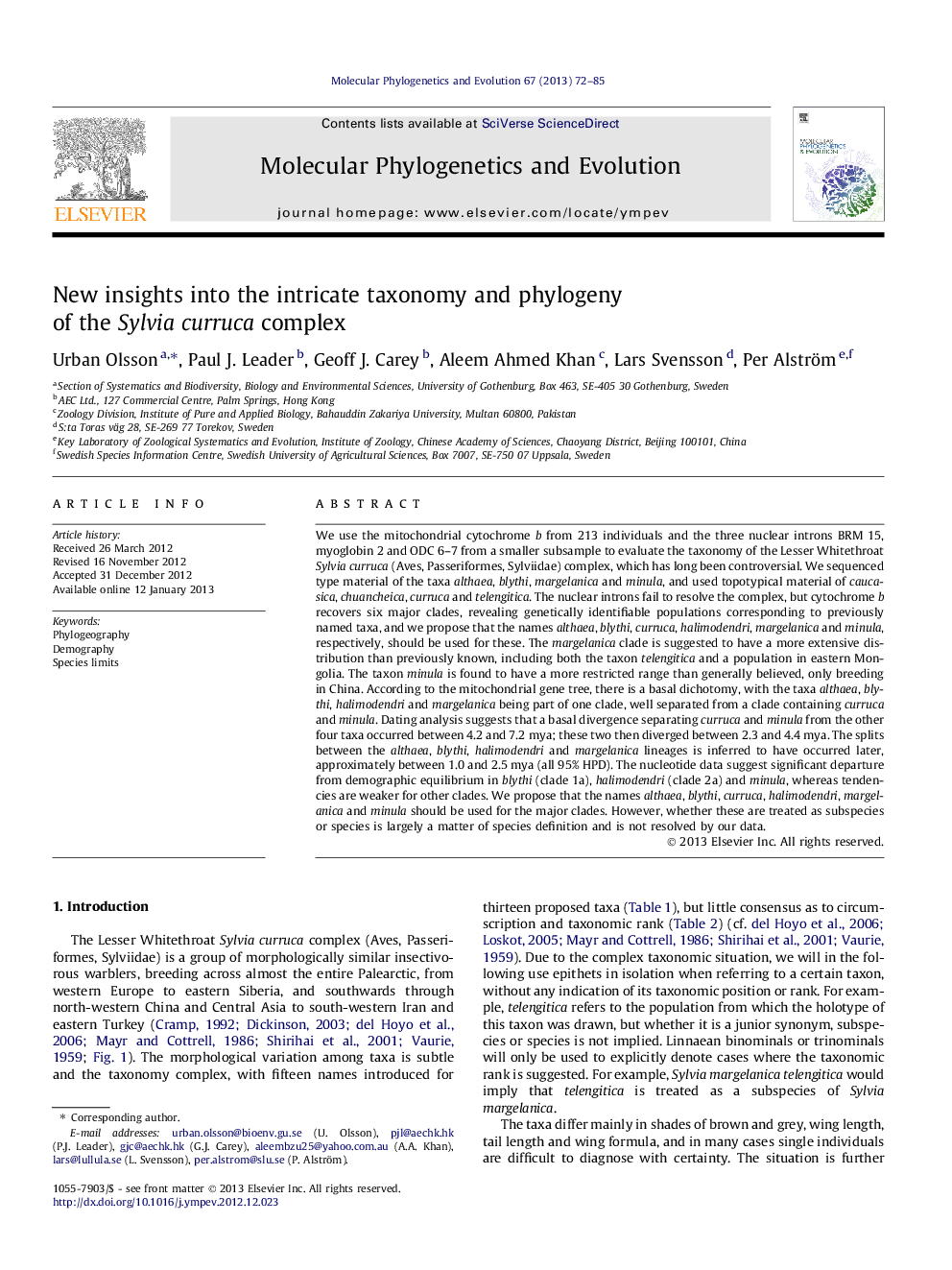| Article ID | Journal | Published Year | Pages | File Type |
|---|---|---|---|---|
| 5920158 | Molecular Phylogenetics and Evolution | 2013 | 14 Pages |
We use the mitochondrial cytochrome b from 213 individuals and the three nuclear introns BRM 15, myoglobin 2 and ODC 6-7 from a smaller subsample to evaluate the taxonomy of the Lesser Whitethroat Sylvia curruca (Aves, Passeriformes, Sylviidae) complex, which has long been controversial. We sequenced type material of the taxa althaea, blythi, margelanica and minula, and used topotypical material of caucasica, chuancheica, curruca and telengitica. The nuclear introns fail to resolve the complex, but cytochrome b recovers six major clades, revealing genetically identifiable populations corresponding to previously named taxa, and we propose that the names althaea, blythi, curruca, halimodendri, margelanica and minula, respectively, should be used for these. The margelanica clade is suggested to have a more extensive distribution than previously known, including both the taxon telengitica and a population in eastern Mongolia. The taxon minula is found to have a more restricted range than generally believed, only breeding in China. According to the mitochondrial gene tree, there is a basal dichotomy, with the taxa althaea, blythi, halimodendri and margelanica being part of one clade, well separated from a clade containing curruca and minula. Dating analysis suggests that a basal divergence separating curruca and minula from the other four taxa occurred between 4.2 and 7.2Â mya; these two then diverged between 2.3 and 4.4Â mya. The splits between the althaea, blythi, halimodendri and margelanica lineages is inferred to have occurred later, approximately between 1.0 and 2.5Â mya (all 95% HPD). The nucleotide data suggest significant departure from demographic equilibrium in blythi (clade 1a), halimodendri (clade 2a) and minula, whereas tendencies are weaker for other clades. We propose that the names althaea, blythi, curruca, halimodendri, margelanica and minula should be used for the major clades. However, whether these are treated as subspecies or species is largely a matter of species definition and is not resolved by our data.
Graphical abstractDownload full-size imageHighlights⺠Seven major clades recovered, clarifying circumscription of previously named taxa. ⺠Unanticipated relationships revealed. ⺠New data on distributions, in some cases in stark contrast to general belief.
